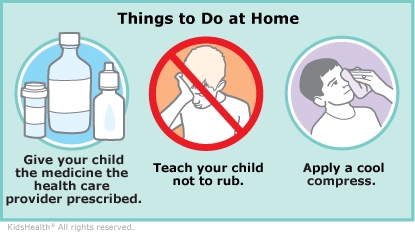Kids with seasonal allergic conjunctivitis (kon-junk-tih-VY-tis) get red, swollen, itchy, and watery eyes from being around pollens that they are allergic to in the air. They may also have a runny nose. The symptoms come on over days to weeks. Treatment with medicines and avoiding the pollen as much as possible can help with symptoms.



Your child:

What causes seasonal allergic conjunctivitis? It's caused by an allergic reaction to pollen in the air. The pollen usually follows a seasonal pattern: tree pollens in the spring, grass pollens in the summer, and weed pollens in the late summer and fall.
Is conjunctivitis the same as pinkeye? Yes, conjunctivitis is sometimes called pinkeye. This is because the conjunctiva (the white part of the eye) is inflamed and looks pink or red. Different things can cause pinkeye, including allergies, bacteria, or viruses.